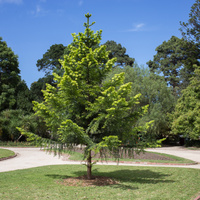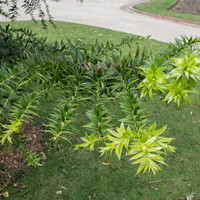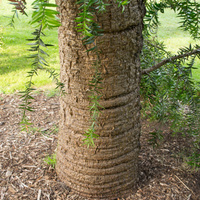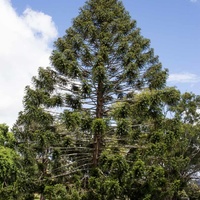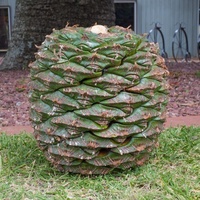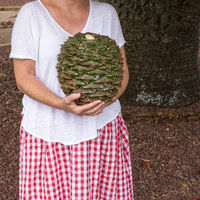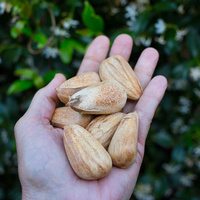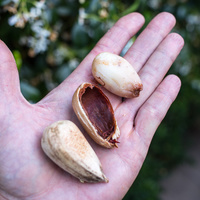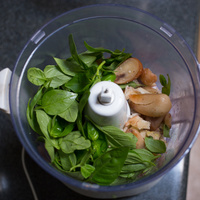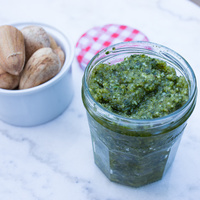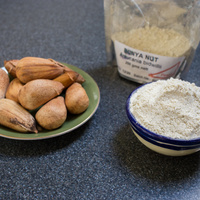Common name: Bunya pine
Other common names: Bunya bunya, False monkey puzzle
Description
Bunya Pine is a nut-bearing and ornamental conifer native to Australia, occurring naturally in subtropical forests on the continent's east coast.
It is a large tree and, in native forests, may attain heights of up to 45 m (150 ft) with a straight, uniform trunk around 2 m (6.5 ft) in diameter. However, it is usually only 20 to 30 m (65 to 100 ft) tall on open sites and in cultivation. The bark is dark brown, scaling, and on mature trees ringed or banded.
Branching starts low on the trunk and, in young trees, forms a pyramidal crown. With age, the branches droop, gradually altering the tree shape to columnar with a domed top.
Leaves are up to 7 cm (3 in) long and lance-shaped on young trees, changing to triangular-shaped on older branches. They emerge lime green, become dark glossy green and are stiff, sharply pointed, and almost stalkless. They are arranged spirally along the branches and remain on the tree in all seasons.
Bunya Pine usually bears female and male cones on the same tree. But as is common with many conifers, male and female cones typically appear at different stages of the tree's life. Usually, male cones appear first, then at middle age, female cones appear too, and fertilisation and fruiting commence.
Female cones are oval, dark green, and, when fertilised, can grow very large. At maturity, they may be up to 30 cm (12 in) long, 20 cm (8 in) wide and weigh up to 20 kgs (44 lbs), though they are more typically 5 to 10 kgs (11 to 22 lbs). They take two to three years to reach maturity, then self-detach and fall to the ground, landing with a thud.
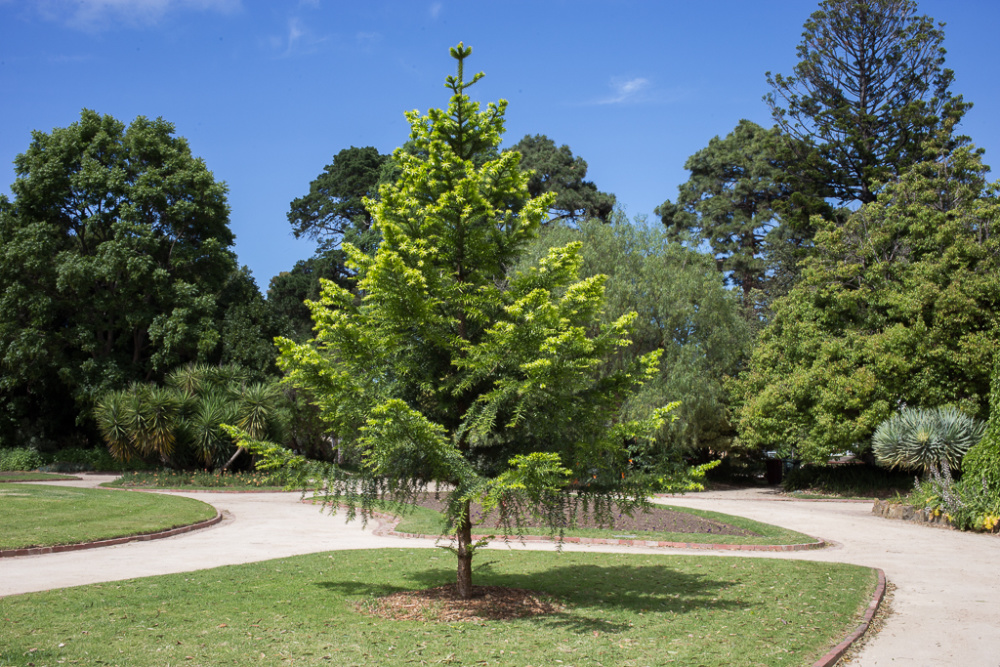
Young tree (Melbourne, Australia)
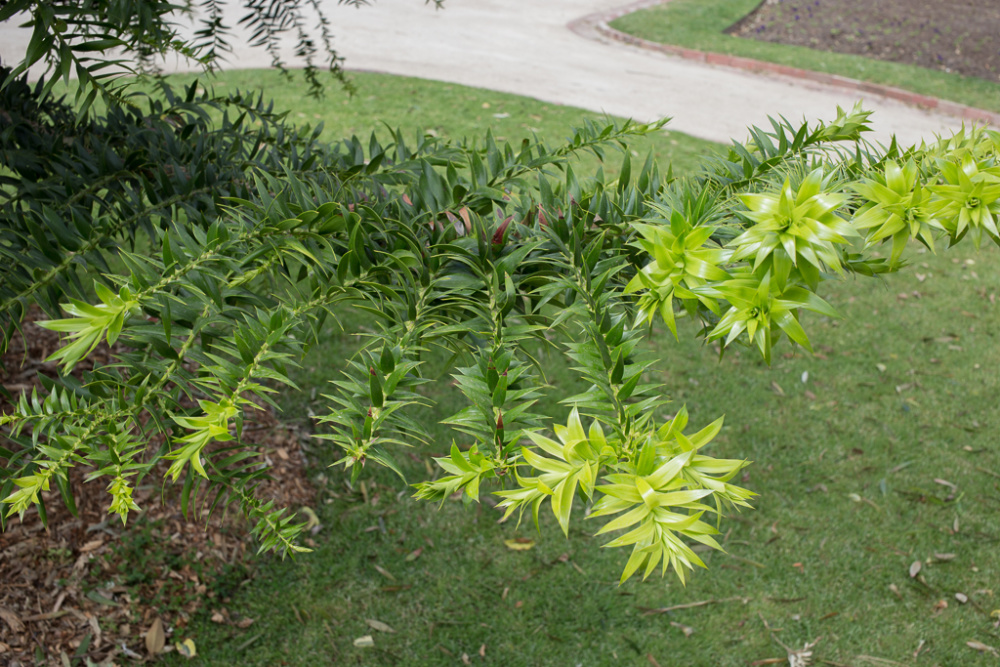
Leaves emerge lime-green, then age to dark green
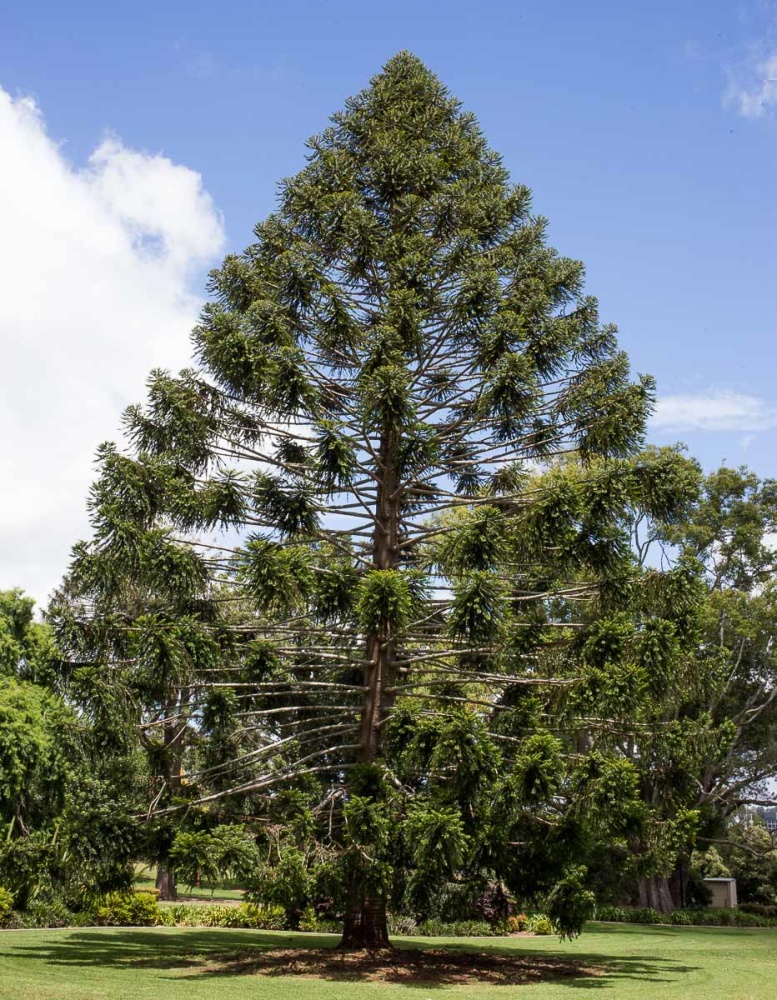
Queens Park, Toowoomba, Australia
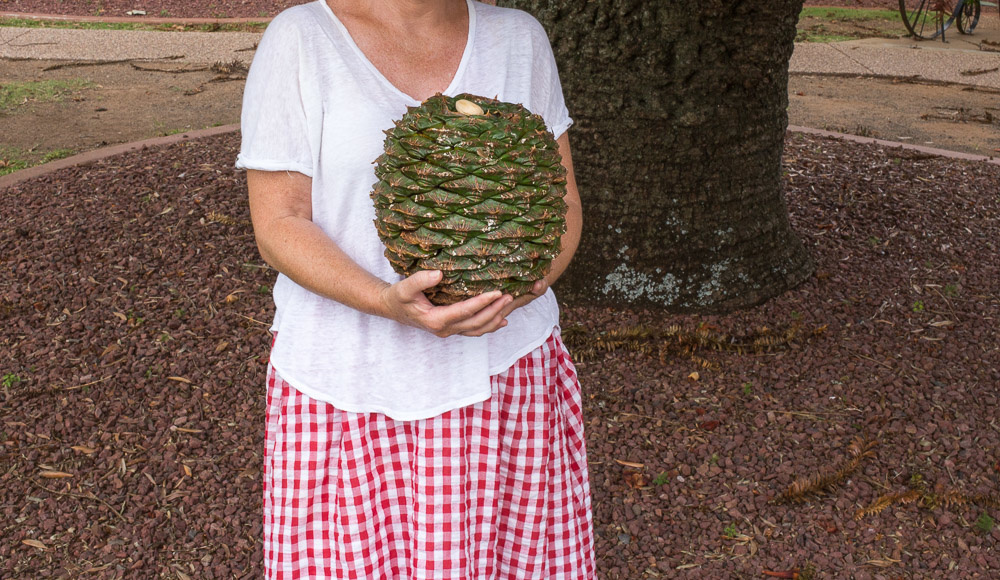
Bunya nut cone (Toowoomba, Australia)
Use
Mature cones contain up to a hundred large, edible seed kernels, each around 4 to 7 cm (1.5 to 2.8 in) long and egg-shaped. Although sometimes eaten raw, they taste best when first boiled or roasted shell-on, then peeled and eaten. Aboriginal Australians have enjoyed eating them for centuries.
The roasted nuts are also a credible substitute for European pine nuts (from Pinus pinea), an essential ingredient of pesto, the classic, green-coloured pasta sauce made by blending pine nuts, basil, garlic, parmesan cheese and olive oil.
Bunya nuts can also be dried and milled (ground) to make a protein-rich, gluten-free flour suitable for mixing with other types of flour to produce bread, cakes, and other baked goods. It has a sweetish flavour, similar to chestnut or almond flour and can be used beyond baking to make milkshakes and pancake mixes and as a thickening agent in sauces, soups, and casseroles.
The timber is valuable, similar to Hoop Pine (Araucaria cunninghamii), another Australian conifer and close relative, which overlaps parts of its natural range. The wood is lightweight, averaging around 460 kgs per cubic meter (29 lbs per cubic foot), and has low to moderate natural resistance to rot, decay and wood-boring insects. It is a non-durable softwood with generally low suitability for outdoor use or heavy construction.
The heartwood is almost identical to Hoop Pine's, ranging from white to pale yellow-brown but lightly pink in tone. Suitable logs are sawn into planks for indoor flooring, cabinets and joinery work, and making musical instruments, mainly guitars.
The bark yields on wounding a gum-resin that Aboriginal Australians used as glue.
The tree's sheer size and uniform shape make it a striking landscape tree, one best suited to large gardens where it can have room to grow.
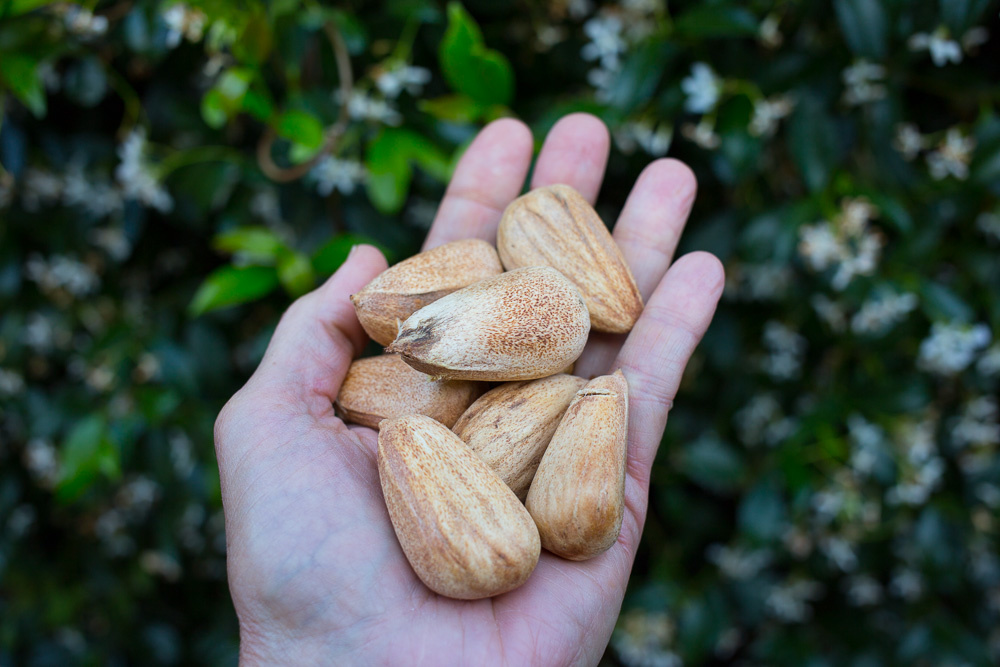
Bunya Nuts
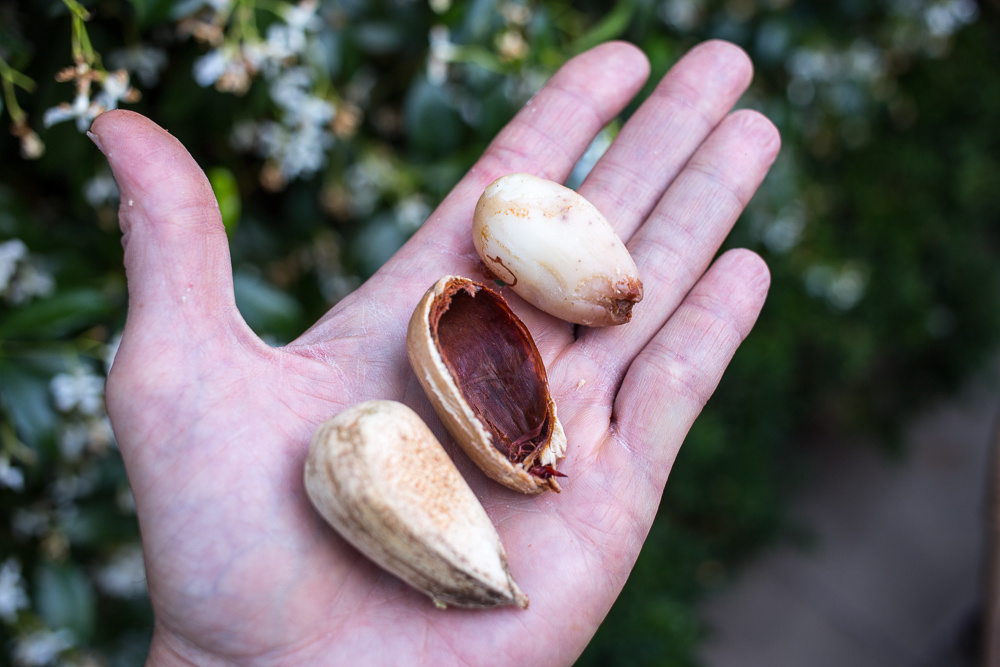
Shell and kernel
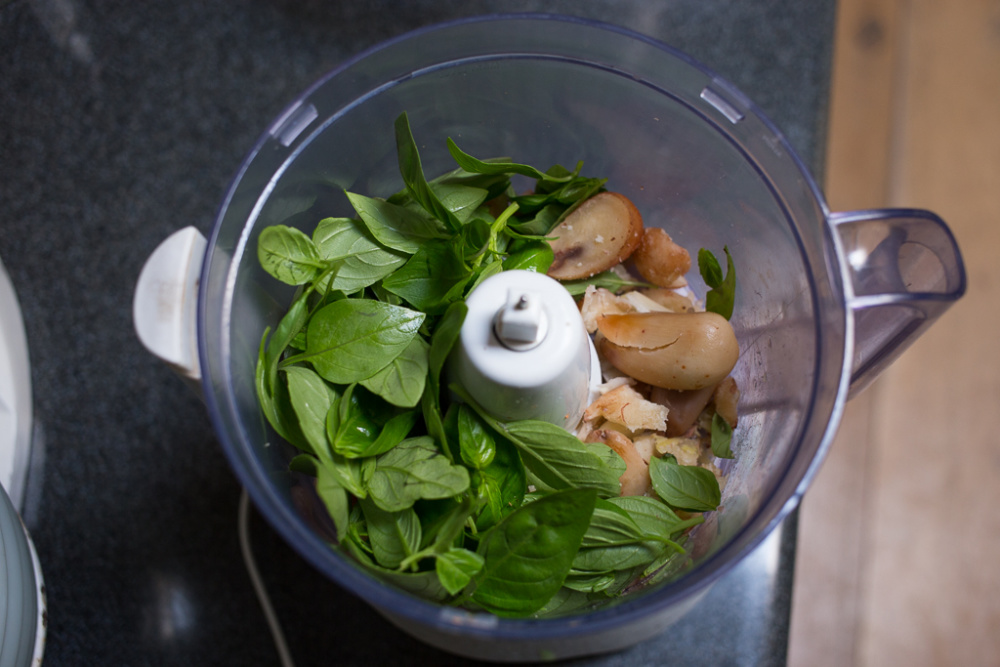
Bunya nuts, basil, garlic, olive oil and parmesan cheese
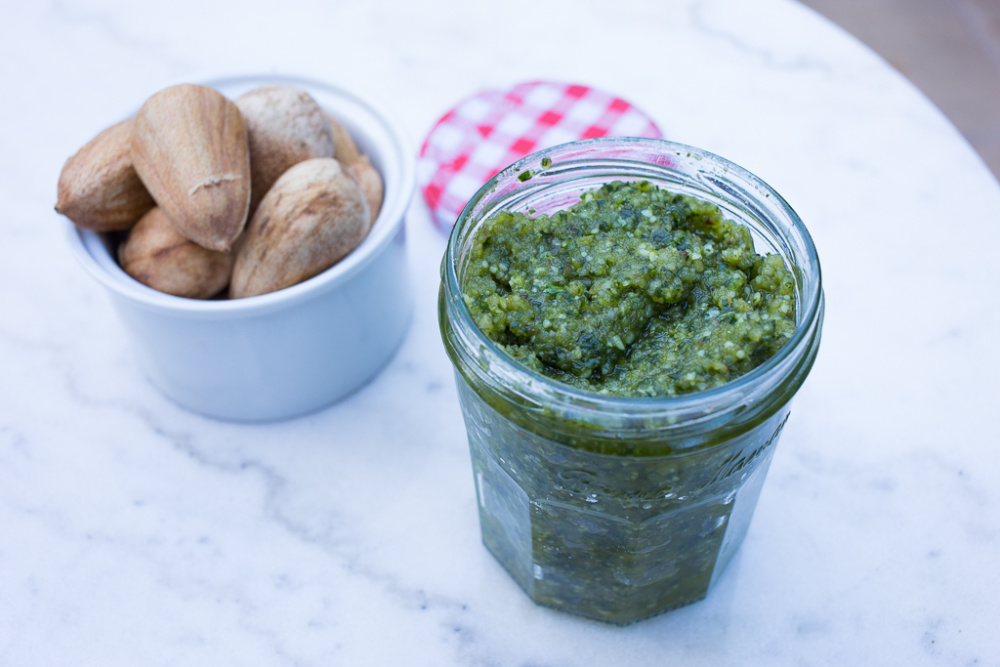
Bunya nut pesto
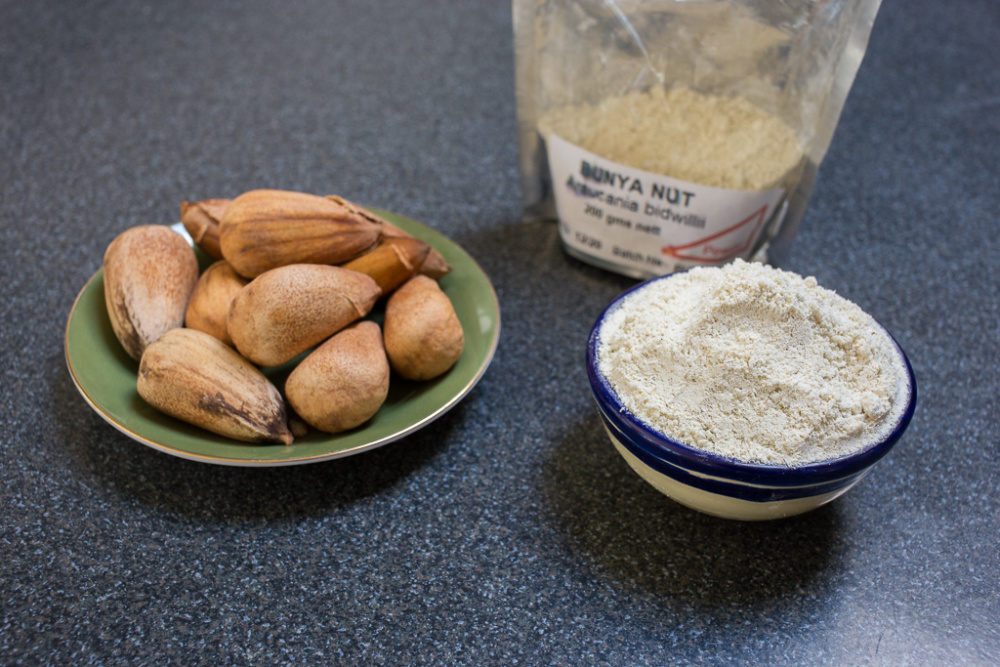
Bunya nut flour

Bunya nut pancakes
General interest
Buyna Pine trees have a long lifespan, with some specimens in Australia believed to be up to five hundred years old.
Climate
Buyna Pine grows naturally in humid, warm temperate to subtropical climates, generally best in areas with annual lows of 7 to 19°C, annual highs of 17 to 30°C, annual rainfall of 600 to 3000 mm and a dry season of 5 months or less.
Although Bunya Pine also grows well in warmer, tropical climates, it rarely produces cones. When it does, they are usually without seed.
Growing
New plants usually start from seed, which remain viable for a few months if kept under cool, dry, air-tight conditions. Pre-treating seeds by soaking them in water helps stimulate germination. After that, they are sown at a shallow depth in individual containers with a free-draining blend of potting mix and sawdust.
Performs best on rich, free-draining clay-loam, loam, sandy-loam and loamy-sand soils of a slightly acid to neutral nature, generally with a pH of 5.5 to 7.5, and on sites with full-sun exposure. Young plants need protection from strong winds and need regular watering under hot, dry conditions but have a good tolerance to drought once established.
Bunya Pine typically produces cones with nuts once the tree is around fifteen years old but may not produce cones at all at the warmer extremes of its range.
Problem features
The mature cones are enormous and heavy and fall to the ground unaided, sometimes from a great height, potentially causing severe personal injury or damage to property.
The shells need piercing before cooking the nuts; otherwise, they may explode.
The leaves have sharp points that can inflict injury on the unwary.
Where it grows
References
Books
-
Boland, D. & Brooker, I. & McDonald, M. W. 2006, Forest trees of Australia, 5th ed., CSIRO Publishing (Ensis), Melbourne
-
Editors of Sunset Magazine 2012, The New Western Garden Book: The Ultimate Gardening Guide, 9th edition, Sunset Publishing Corporation, California
-
Francis, J. K. 1998, Tree species for planting in forest, rural, and urban areas of Puerto Rico, U.S. Department of Agriculture, Forest Service, International Institute of Tropical Forestry, Río Piedras, Puerto Rico
-
Gilman, E. F. 1997, Trees for urban and suburban landscapes, Delmar Publishers, Albany, New York
-
Holliday, I. 2002, A field guide to Australian trees, 3rd revised editon, New Holland Publishers, Frenchs Forest, New South Wales
-
Howes, F. N. 1949, Vegetable gums and resins, Chronica Botanica Company, Waltham, Massachusetts
-
Lake, M. 2015, Australian rainforest woods : characteristics, uses and identification, CSIRO Publishing, Collingwood, Victoria
-
Macmillan, H. F. 1943, Tropical planting and gardening : with special reference to Ceylon, 5th ed, Macmillan Publishing, London
-
Menninger, E. A. 1977, Edible nuts of the world, Horticultural Books, Stuart, Florida
-
Ntima, O. O. 1968, The araucarias, Commonwealth Forestry Institute, University of Oxford, Oxfordshire
-
Nussinovitch, A. 2010, Plant gum exudates of the world : sources, distribution, properties, and applications, CRC Press / Taylor & Francis, Boca Raton, Florida
-
Perry, B. 2010, Landscape plants for California gardens: an illustrated reference of plants for California landscapes, Land Design Publishing, Claremont, California
-
Randall, R. P. 2002, A global compendium of weeds, R.G. and F.J. Richardson Press, Melbourne
-
Reyes, G. 1992, Wood densities of tropical tree species, U.S. Department of Agriculture, Forest Service, Southern Forest Experiment Station, New Orleans, Louisiana
-
Rowell, R. J. 1996, Ornamental conifers for Australian gardens, New South Wales University Press, Kensington, New South Wales
-
Streets, R. J. & Troup, R. S. 1962, Exotic forest trees in the British Commonwealth, Oxford University Press, Oxford, England
Articles, Journals, Reports and Working Papers
-
Hegarty, M. P. & Hegarty, E. E. & Wills, R. B. H. 2001, Food safety of Australian Plant Bushfoods, Centre for Advancement of Food Technology & Nutrition, University of Newcastle, Rural Industries Research and Development Corporation (RIRDC), Australian Capital Territory
